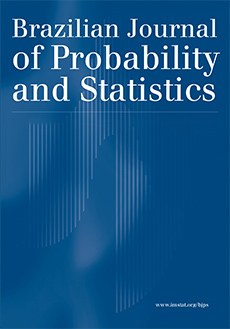Abstract
We consider a interacting particle system, the Glauber $+$ Kawasaki model. This model is the result of the combination of a fast stirring, the Kawasaki part, and a spin flip process, the Glauber part. This process has a Reaction–Diffusion equation as hydrodynamic limit, as is proven by De Masi and Presutti (Mathematical Methods for Hydrodynamic Limits (1991) Springer). The ergodicity of these dynamics (one well potential) was proven in Brasseco et al. (Amer. Math. Soc. Transl. Ser. 2 198 (2000) 37–49), for any dimension. In this article, we prove the asymptotic exponentiality for certain exit time from a subset of the basin of attraction of the well.
Citation
Adrian Hinojosa. "Exit time for a reaction diffusion model: Case of a one well potential." Braz. J. Probab. Stat. 32 (4) 783 - 794, November 2018. https://doi.org/10.1214/17-BJPS363
Information





